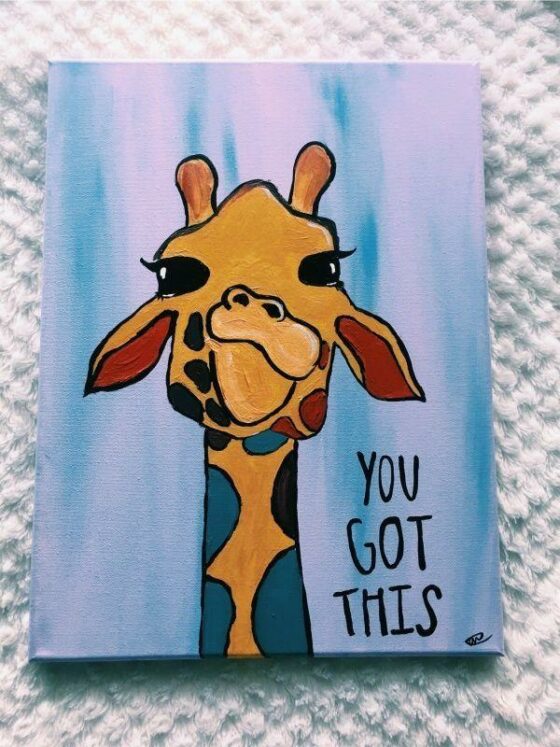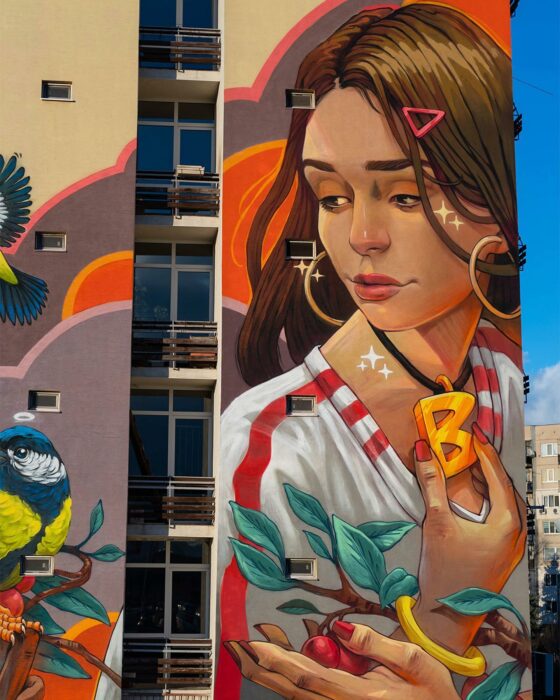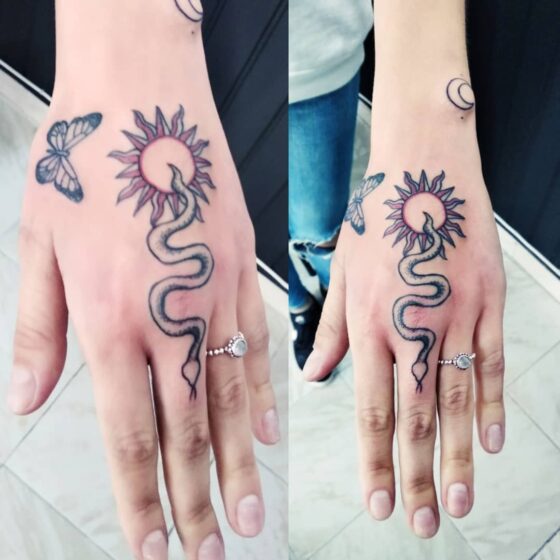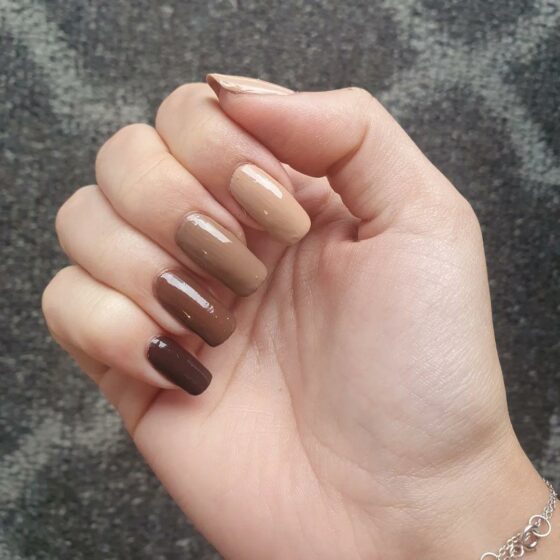Mixing colors might be difficult for amateur painters. The importance of color psychology, as well as the many painting media, cannot be overstated.
Mastering how colors interact is among the core skills to master as a starting artist. Blending paint can be intimidating at first. However, learning the fundamentals will let you produce artwork you’ll be satisfied with, and it will give you the spirit to go on to more advanced paint mixing techniques.
We’ll explain to you how to blend the paint in a number of mediums, including acrylic to oil, in this video. You’ll also know about color theory and how to figure which colors to mix together to make new ones. You’ll eventually discover that an entire universe of possibilities awaits you and your creative imagination!
Why Is It Important to Mix Your Own Paint?
While painting, you might employ various methods and approaches. Blending paint is among the most essential things to learn. The ability to create a huge spectrum of pictures and tones requires mixing colors.
If you’re new to painting, your collection will most likely be limited to a few colors. This is fine as long as you have the three basic colors, as they will let you blend colors in whatever hue you choose. Blue, red, and yellow is the main colors. Each color you have seen is made up of these colors when blended.
When you use paint straight from the container, it often isn’t the precise color hue you desire. It might have to be toned down or brightened up from time to time. This is when color mixing plays a great role. Mixing colors is indeed a terrific way to cut costs and time since it enables you to skip purchasing every hue and instead make it yourself when you only need a little quantity.
The free color mixing tool feature lets you blend or merge colors in various amounts and view the results. You may choose from a variety of color modes, including RGB, LCH, and hex. The color mixer can also assist you in learning the fundamentals of color blending for painting.
Things You Need to Know About Color Theory
Learning the three main colors is the first step towards blending colors. You’re probably well aware of primary colors and their significance. But first, let’s go through color theory to make sure you’re updated.
- Primary Colors
The three fundamental hues are red, blue, and yellow, as you already know. Combining these colors can produce a vast array of new hues. As you can’t produce primary colors, you’ll still need them. While the process is simple, there are several distinct tones of each main color to choose from. It’s recommended to have two of every basic color – one from a warmer tone and the other in a cooler tone – when purchasing the first paint kit.
Possessing two distinct tones of each basic color makes it very easy to blend secondary and tertiary shades. You’ll be able to achieve the precise tone you desire with less work, and you’ll have many color selections to choose from. You may blend a larger spectrum of colors by simply having varied tints of each fundamental color. For instance, various yellows and blues could be combined to create shades of green.
- Secondary Colors
After you’ve gathered all of the primary colors, you may start mixing secondary colors with them. When two primary colors are blended, a secondary color is created. The secondary colors are orange, green, and purple. Painters can use a color-mixing table to get the precise shade they desire, but a simple color-mixing rule of secondary colors is provided below.
- Green – Yellow and blue
- Purple – Blue and red
- Orange – Yellow and red
You may create various tints and hues by blending colors in this area. This may be tweaked based upon how much every shade you apply and which basic color hues you utilize. To achieve the precise hue you desire, you may use a color-mixing chart. However, the smartest way to do it would be to experiment. The more you experiment with color schemes, the more you’ll learn which mixtures generate particular effects.
- Tertiary Colors
Tertiary colors represent, at their most basic level, variants of secondary colors. You may get a larger spectrum of colors by blending secondary colors in various ratios and tints, which we term tertiary colors. This may be accomplished by combining a secondary color with just a primary color to add diversity. Tertiary colors are excellent for building a more comprehensive color pattern and shifting between hues.
You may make six distinct tertiary hues by blending colors here. All of these may be tweaked to generate a larger spectrum of colors. The following are tertiary colors:
- Red-purple
- Yellow-orange
- Yellow-green
- Red-orange
- Blue-green
- Blue-purple
When understanding how to combine colors, you’ll see that they’re all connected and come from the very same fundamental tones. To achieve a far larger spectrum of hues when combining paint colors, users only have to begin with three primary shades.
The Purpose of Color Wheels
When you first begin combining colors, you’ll come across the color wheel frequently. A color wheel is a form of a definite color-mixing diagram that can assist you in comprehending various color connections. When blending particular colors, using a color wheel handy will make it much easier to find which shades to utilize.
- Complementary Colors
When looking first at a color wheel, you’ll notice that certain hues are immediately opposite one another. These are colors that go well together. Whenever these colors are used side by side, they complement each other and create a brighter impression, as the names indicate.
Yellow and purple enhance one another, blue and orange compliment one another and, and red and green enhance each other when it comes to complementary hues. Also, there are hues that seem to be split-complementary. It is a common alternative; instead of using the opposing color, it employs the colors closely around. This has the same impact as complementary colors but gives you more options.
- Analogous Colors
Take a glance at the three colors that seem to be close to one another on the color wheel to find comparable colors. Simply refer to any region of the color spectrum, as well as the three hues next to it will be equivalent. Because these are closely related shades, they complement each other well.
- Triadic Colors
While looking at the color wheel, triadic colors would be any shades that are equally spaced apart. Especially when combined, they produce a vibrant and interesting color scheme. Orange, green, and purple, for instance, are triadic hues that combine very well to create a striking impact.
How to Mix Difficult Colors While Painting
Certain mixed colors are quite simple to create, whereas others are extremely complex. Brown and grey, both complex tertiary hues, are two among the most challenging to work with. Each one of the primary shades is mixed together to make compound tertiary colors. Brown or grey is determined by the varied proportions of each color.
- What Colors to Mix to Produce Brown?
The shade of brown that gets depends on the particular ratio of colors you mix. However, there are several effective ways to blend paint colors for various brown tints.
- Warm Shade of Brown
If you just want to color natural brown elements like wood trees and brickwork, you’ll need to choose a warm brown color. You’ll need to have a warm green for all of this, something that you can produce by combining a yellow with solely a touch of red with a blue that has a tinge of red. To make a lovely brown tint, combine the greens with a warm red.
- Cold Shade of Brown
In contrast to just a warm brown, a cold brown is also available. You’ll employ chill basic colors rather than warmer tones. The colors red and green are usually needed. However, these must always be created in a lighter hue. The mixture can be warmed or chilled beyond that with red or blue. This type of brown seems ideal for creating dark hair and striking trees.
Getting Creative with Tones
Whenever we talk about tones, we’re talking about how bright or dark a particular color is. Put a distinction with black solely on a single point and white on another while playing with color tones. To move from one hue to another, create distinct tonal levels.
Start performing the very same thing with any other hue once you’ve mastered black and white. Watercolors make it simple to create a tonal range like this since it could be brightened with simply water. White can be added to oil paintings, acrylic paints, or even gouache to brighten them.
Painting is Fun Once You Get Hold of The Basics of Color Mixing
Understand the terminology for color theory, notably tones, color wheel, and hues. They’ll demonstrate to you how and where to blend and paint the colors in reality.
Experimenting by yourself will help you with understanding the levels of hues and tones, as well as you will be able to understand the amount needed to create a new color out of your primary and secondary colors.







